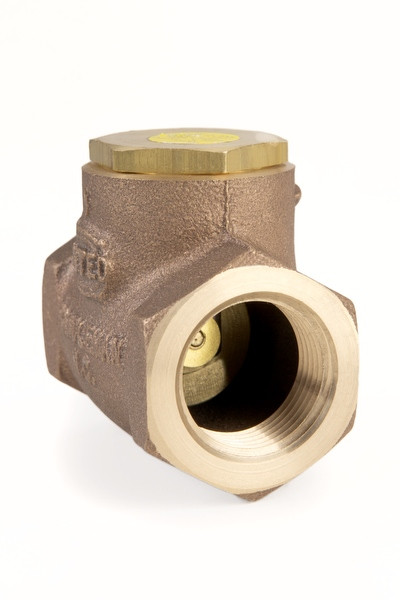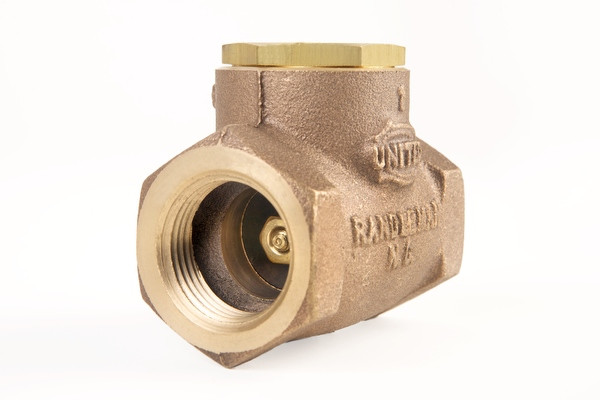Swing Check Valves
A Simple Solution for Preventing Backflow
Check Valves allow flow through a pipeline in one direction and prevent flow from returning in the opposite direction. A swing check valve has a hinged clapper that swings or rotates about a supporting shaft. It allows forward flow and blocks reverse flow. Preventing backflow provides a strong option for fluids that flow in one direction.
Swing check valves, like all check valves, are commonly installed on the discharge side of the pump. An important role of the swing check valve is to act as the automatic shut-off valve when the pump stops to prevent the system from draining. Installing a well-made swing check valve, like those made by United Brass Works, can control pressure surges.
How a Swing Check Valve Operates
The swing check valve has a valve body, seat, and disc linked to the hinge. The disc rotates horizontally when the flow encounters the valve, enabling forward flow. When the flow stops, the disc returns to the valve seat to prevent backflow.
Various disc and seat designs exist, primarily to work with different pressure levels for different applications. A prescribed amount of upstream pressure is typically required to operate a swing check valve. Depending on the valve size, check valves require a certain amount of flow rate to achieve stable operation.
The swing check valve’s disc and the rocker connect, allowing them to revolve at an angle around the pin shaft. When input pressure to the disc exceeds resistance pressure, fluid flows in the prescribed direction. While the valve opens, the disc separates from its seat and rotates around the pin to a fully open position.
What makes one swing check valve better than another are the materials used and the precision and quality of the manufacturing. At United Brass Works, our swing check valves are made from brass and bronze with stainless steel hinges. Each design element is precisely engineered to be the exact ideal size.
This valve will work very well for a very long time.
The Right Installation is Important
A swing check valve should be installed horizontally with the cap upright. It should not be installed on its side.
This horizontal position prevents gravity from impeding the valve’s operation. If installing the swing check valve in this position is impossible, a different valve should be used. United Brass Works includes clear instructions and advice with each valve, ensuring you don’t install the wrong type of valve for your project.
Because of their simple design and durable materials, United Brass Works’ swing check valves require little maintenance. You should perform a visual inspection on a routine basis, checking for debris, leaks, or rust, and keep the seat clean. Other than that, no maintenance or repair is needed.
How Swing Check Valves Are Used
Since swing check valves work well with large, predictable flow, they are frequently used in wastewater treatment and water pumping. However, they are not the best option for heavier crudes and viscous fluids. A United Brass Works technician can advise you on the type of valve for these applications.
Don’t hesitate to contact one of our valve specialists by clicking here or calling 800.334.3035. United Brass Works has been making high-quality ball valves for over 100 years, and we’re happy to answer any of your questions.

Model 210 Swing Check Valve

Model 210A Swing Check Valve

Model 210S Swing Check Valve

Model 99S Swing Check Valve
Contact Us for Swing Check Valves
Don’t hesitate to contact one of our valve specialists by clicking here or calling 800.334.3035. United Brass Works has been making high-quality ball valves for over 100 years, and we’re happy to answer any of your questions.